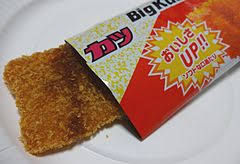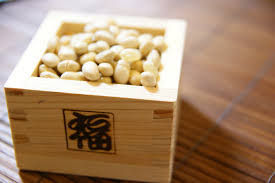🌸日本のスナック🌸
- Jannnice.I
- Nov 5, 2017
- 5 min read
I will give my recommendations for the most popular snacks in Japan in the END!!!
History of Japan's Snack

Japan's first snack boom was in the 15th century when Samurai invented small portable foods that had a long shelf life for battle. Many of these snacks have survived to this day.
The next wave of Japanese snack innovation came in the 1860s after Japanese markets suddenly opened to imported sugar and grains. Western style snacks were amongst the first Japanese factory products as the country began to industrialize.

Such snacks weren't western for long as they quickly adapted to the local culture.Snacks continued to gain popularity as industrialization picked up speed and workers spent more time at the factory or office. The children of these workers had more pocket money and became a significant customer for snack companies.

The Japanese snack food industry became highly competitive and popular brands introduced new limited addition flavors on a monthly basis in order to gain shelf space at Japanese convenience stores and supermarkets.

It's a common complaint in Japan that snacks come and go quickly.
Just when you find something you like, they stop making it. In this environment of constant change, a few snacks have held up to become classics. These are the snacks that have held on for decades or longer to become much adored symbols of Japanese snack culture.
The most traditional Japanese Snacks
1. Senbei
Senbei are Japanese rice crackers. They are available in hundreds of flavors, shapes and colors. Senbei are best fresh off the grill.

2. Crepes
Crepes shops, often with 30 or more plastic models out front that represent the menu, are a common sight in Japan. The pancakes used in Japanese crepesare similar to the French original but the ingredients inside tend to be quite different.

3. Pocky
Pocky are a brand of chocolate covered biscuit sticks launched in 1966 that have a chocolate-free zone on each stick for your hands. They have gone on to become a classic Japanese snack that is well known in Asia. They have been released in hundreds of flavors but the red packaged chocolate flavor is the timeless classic.

4. Dorayaki
Dorayaki are two castella pancakes sandwiched together with anko and other ingredients such as whipped cream.

5. Melon Pan
Bread shaped like a melon with a thin cookie crust. Despite their name, Melon Pan aren't typically melon flavored.

6. Manju
Manju are Chinese-style steamed buns that have a bread-like outer shell and asweet inner filling. The bread is somewhat sticky and they are often have wax paper on the bottom. Manju come in hundreds of varieties.

7. Dango
Japanese rice dumplings that are usually served on a stick with a sweet topping.

8. Daifuku
Mochi filled with sweet fillings such as anko. Daifuku come in endless varieties and are easy to find in Japan. They're as common as cake.

9. Pretz
Pretz are a brand of seasoned pretzel-like sticks they were first released in 1962 predating other stick-shaped Japanese snacks such as pocky.

10. Castella
Castella are sponge cakes that were introduced to Japan by the Portuguese in the 16th century. Despite their simple taste, they remain popular in Japan today.

11. Kaki No Tane
Kaki No Tane, literally "kaki seeds", are senbei rice crackers with a distinctive shape that look like the seeds of a kaki fruit. They are slightly spicy as their ingredients include a small amount of chilli powder. Kaki No Tane are usually served mixed with peanuts and are considered a drinking snack.

12. Wasabi Peas
Roasted peas partially covered in a batter that includes wasabi powder or flavoring. Real wasabi is difficult to cultivate and is fairly expensive. It's common for snacks to include simulated wasabi flavor such as horseradish.

13. Imagawayaki
Imagawayaki are a Japanese street food that resemble thick pancakes filled with red bean paste, custard, fruit jams, meat, potatoes or curry.

14. Umaibo
Umaibo are a brand of individually wrapped corn puffs that come in dozens of flavors both savory and sweet. They are represented by a cat mascot that looks remarkably like Doraemon.

15. Choco Banana
Chocolate or strawberry chocolate coated bananas on a stick are a classicJapanese festival food. They are typically covered in chocolate sprinkles. In some cases, the chocolate used is more waxy than sweet.

16. Anpan
Anpan is a type of sweet roll invented in 1875 by a former Samurai. They aremost often filled with red bean paste.

17. Kinoko No Yama
Kinoko No Yama, literally "mushroom mountain", are a brand of biscuits shaped like mushrooms topped with chocolate that come in several flavors. They have a sister product called Takenoko No Sato that are shaped like bamboo shoots.

18. Arare
A type of small, roundish Japanese crackers made with glutinous rice and flavored with soy sauce. Arare often have something at their center such as peanuts or peas.

19. Anmitsu
Anmitsu is a classic Japanese dessert that is made from ingredients such asanko, agar jelly, mochi, fruits, boiled peas and ice cream served in a bowl with a small pot of black syrup or kinako on the side.

20. Karinto
Karinto are a deep fried Japanese sweet with a characteristic burnt appearance and crunchy texture that date back to the Edo-era. They are increasingly rare in modern times but can be found at old fashioned cafes and ryokan as a snack.

21. Yukimi Daifuku
Yukimi Daifuku are balls of ice cream wrapped in mochi that are available in a variety of flavors including chocolate, vanilla, strawberry and green tea. They were first launched in 1981 and are considered the first mochi ice cream.

22. Konpeito
Konpeito are traditional Japanese sugar candies that have a rough texture and star shape. Quality konpeito are manufactured according to a 19th century process that takes close to 2 weeks. Although they're just sugar, they're considered a fancy sweet that can be presented a formal events such as tea ceremony.

23. Jagariko
A brand of stick-shaped potato chips that are known for their iconic cup-like packaging. Jagariko were introduced in 1995 and were an instant hit that tapped Japan's fondness for stick shaped snacks such as pocky and pretz.

24. Big Katsu
Big Katsu is an inexpensive snack designed to look like Tonkatsu, a popular Japanese breaded pork dish. Despite its appearance it's made of Japanese fish paste, also known as surimi.

25. Every Burger
Hamburger shaped snacks with a cookie bun, milk chocolate patty and white chocolate for cheese.

26. Ichigo Ame
Ichigo Ame are the strawberry version of candy apples. They are occasionally available from street vendors, particularly in peak strawberry season. Large varieties of Japanese strawberries such as Benihoppe or Amaou are usually used.

27. Nikuman
Nikuman are Chinese-style steamed buns filled with pork. Shops than sell Nikuman often have steam pouring from them.

28. Kakigori
A Japanese shaved ice dessert that's considered a summer classic that hasn't changed much in the past 50 years. It's available from street vendors and cafes. Many families also make Kakigori at home with a hand-cranked ice shaver. Common toppings include sugar syrups, condensed milk or traditional Japanese sweets such as anko.

29. Irimame
Dried soybeans that are thrown at demons on Japan's Setsubun holiday. Any beans that are left can be eaten. Traditionally you're supposed to eat the number of Irimame equal to your age on Setsubun.

30. Monaka
Monaka are a Japanese sweet made with a crispy outer layer similar to an ice cream cone. They are traditionally filled with red bean paste, mochi or chestnut paste. In modern times, ice cream is often added as well.

31. Bisuko
Bisuko is a cookie of two plain biscuits sandwiched together with vanilla cream that dates back to 1933.

32. Amanatto
Amanatto are a variety of beans such as black soybeans that are boiled in sugar and then dried. They are classic Japanese sweet that are most popular amongst people over 80 years of age. Amanatto are also used in baking, for example amanatto bread is a common sweet bread in Japan.

My Favorite Japanese Snacks

















Comentários